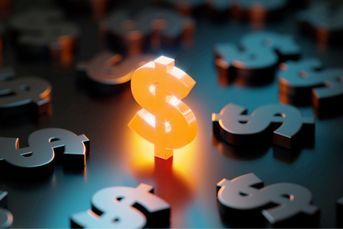Stocks enter correction territory amid renewed interest-rate fears
The S&P 500 is now more than 10% off the record it hit on Jan. 26
The dread that gripped equity markets earlier in the week reemerged Thursday as U.S. stocks plunged into a correction on concern that rising interest rates will drag down economic growth.
Selling accelerated in the final hour of trading as major indexes breached round-number milestones they blew past just weeks ago. The S&P 500 tumbled through 2,600 and the Dow failed to hold 24,000. Both are headed toward their average price for the past 200 days, a level that technical analysts say may act as a magnet and a floor.
In the end, the S&P 500 sank 3.8%, taking its rout since a Jan. 26 record beyond 10%, a move that meets the accepted definition of a correction.
The negative superlatives are piling up quickly: The index erased its gain for the year to close at a two-month low and is on track for its worst week since the height of the financial crisis. The Dow plunged more than 1,000 points for the second time in four days.
Pressure again came from the Treasury market, where another weak auction gave bond bears ammunition, sending the 10-year yield to the highest in four years. Equity investors took bond signal to mean interest rates will push higher, denting earnings and consumer-spending power.
For a market that hadn’t fallen 3% from any high in more than a year, the week’s action was enough to rattle even the biggest equity bulls. While investors are accustomed to buying the dip, that wisdom is now in question when more selling by speculators may be imminent.
“There’s some big-money players that have really leveraged to the low rates forever, and they have to unwind those trades,” said Doug Cote, chief market strategist at Voya Investment Management. “They could be in full panic mode right now.”
As the equity selling intensified, haven assets grew attractive. Gold futures erased losses to push higher, the yen strengthened and even Treasuries pared the worst of their declines.
Volatility spread across assets. The Cboe Volatility Index was more than double its level a week ago. Ten-year Treasury yields fluctuated near their four-year highs, while the yen found traction as a haven from the stock turmoil. The VIX’s bond-market cousin reached its highest level since April. A measure of currency volatility spiked to levels last seen almost a year ago, with a plunge in the yuan and a rise in the pound adding to turbulence. European equities weren’t spared, with the Euro Stoxx 50 volatility gauge spiking toward the highest since June 2016.
At the New York close, the S&P 500 Index was down 3.8%. The Dow Jones Industrial Average lost 4.1% and the Nasdaq 100 Index fell 4.2%. The Stoxx Europe 600 Index dipped 1.6%. The U.K.’s FTSE 100 Index sank 1.5%. The MSCI Emerging Market Index fell 1.2%.
The yield on 10-year Treasuries fell less than one basis point to 2.83%. Germany’s 10-year yield climbed two basis points to 0.76%. Britain’s 10-year yield climbed seven basis points to 1.617%, the biggest surge in five weeks.
(More: Market’s convulsions could signal beginning of end for bull market)
Learn more about reprints and licensing for this article.








